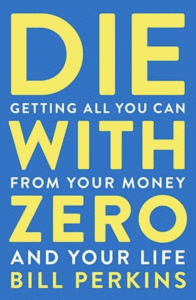In the current economy, sometimes it seems impossible to look to the future, whether buying a car or deciding whether to rent or buy your home! These ‘adult’ choices and goals can be challenging to navigate, let alone save up for.
Thankfully, in 2022, the Canadian Government proposed the Tax-Free First Home Savings Account, also known as FHSA. This registered plan allows potential first-time home buyers to invest up to $40,000 with an annual contribution limit of $8,000. The FHSA will be made accessible on April 1, 2023.
What Is An FHSA?
The FHSA aims to help you buy or build your first home.
Like a Registered Retirement Savings Plan (RRSP), the contributions made will be tax-deductible, and the withdrawals from the FHSA account for purchasing your first home will be tax-free like a Tax-Free Savings Account (TFSA).
The investments allowed with an FHSA are the same as those with the TFSA.
Who & How To Open An FHSA
The requirements to open an FHSA are:
- First, you must be a Tax resident of Canada (meaning Permanent Resident, Temporary Workers, or Canadian Citizen)
- You must be at least 18 years old.
- Finally, you must be a first-time home buyer.
The last requirement about being a first-time home buyer means that before opening the account, you have not owned your own home where you have lived at any time of the given year or four years prior.
Your FHSA account will close after December 31 of the year of these events occurring:
- Your 15th FHSA anniversary, from when you first opened it.
- You turn 71 years old.
If you have leftover savings from purchasing your first home, it can be transferred to your RRSP or Registered Retirement Income Fund (RRIF) tax-free. Otherwise, it would have to be withdrawn and taxed. This unwithdrawn savings from your FHSA must be transferred or withdrawn before December 31, following the year of the initial withdrawal.
You can open an FHSA account with any financial institution that issues RRSPs and TFSAs. So, for example, banks, life insurance companies, Canadian trust companies, etc.
Can I open an FHSA if I already have a house?
No, you must be a first-time home buyer to qualify.
Can I open an FHSA if my partner already owns a home?
No, you must be a first-time home buyer to qualify. You no longer qualify if you already live in the home with your partner.
Can I open an FHSA if I have rental units?
Yes, as long as you are not living in the unit or any of the preceding 4 years.
How Much Can I Contribute To My FHSA?
The FHSA allows up to $40,000 to be invested with an annual limit of $8,000. So, the more you invest, the lower the allowance room is. You can claim an income deduction within the year if you contribute. You can also carry it forward indefinitely. You will NOT be allowed a net income deductible if you continue contributing after withdrawing from the account.
If you don’t contribute the total $8,000 within a given year, whatever amount is left over will be added to the following year’s annual allowance.
You can have more than one FHSA. However, the annual and lifetime limit does not change.
You are responsible for ensuring you stay within the FHSA allotted amount. However, the Canada Revenue Agency does keep track of your basic contributions; remember, they only update occasionally.
Can a parent contribute to a child’s FHSA?
No, the money has to be contributed by the child. The tax credit is meant to go toward the holder of the FHSA.
However, a parent can gift the money to their child for the contribution to be made by their child. Please talk to a tax specialist to avoid any issues with the attribution rule.
What is the penalty for overcontributing to an FHSA?
The CRA will apply a 1% penalty per month on the overcontribution amount. You should correct the situation as soon as possible and contact the CRA.
What Is A Qualifying Withdrawal?
A qualifying withdrawal means a non-taxable withdrawal in the case of the FHSA. However, a few conditions need to be met to withdraw from the FHSA on a tax-free basis.
- You must be buying your first home at the time of the withdrawal. This means you have not owned the home you have lived in at any time in the given year or four years prior. You can make a qualifying withdrawal within 30 days of moving into your new home, no later.
- There must be a written agreement stating that you are buying or building your first home before October 1 of the year after you withdrew from your FHSA.
- This home must be your primary residence within a year of buying or building it.
- Your first home must be a qualifying house in Canada, optionally if you have a share in a cooperative housing corporation with ownership and an equity interest in a housing unit in Canada. This last remark does NOT apply if your claim only gives you rights as a tenant.
If you meet these conditions, you can withdraw the total amount in your FHSA, which can also be done through a series of transactions.
Non-qualifying withdrawals will be reflected in your income tax. The process is like the taxable RRSP withdrawals. Your annual or lifetime contribution limit will not change.
Can I contribute back what I withdraw from my FHSA?
No. It’s not like a TFSA. You cannot contribute back your withdrawal once it is made.
Can I use the money even if I don’t buy a house?
Yes you can but it no longer is a tax-free withdrawal. The intended purpose is to buy a home and if you don’t, you would need to pay tax on the full amount as income.
The other option is to transfer it to your RRSP which is the best option from tax perspective.
Do I have to withdraw all the money from my FHSA at once?
No, but you must withdraw, or transfer to your RRSP/RRIF, all the remaining amount by the end of the following calendar year.
If you make the first withdrawal on January 15, 2023, you have to withdraw the rest by December 31, 2024.
How To Transfer To & From Your FHSA
You can transfer your FHSA to a different FHSA, your RRSP or your RRIF tax-free.
If transferring funds from your FHSA to RRSP or RRIF, you must abide by the rules of those accounts, including taxable withdrawals. In addition, transferring funds to your RRSP will not contribute to your available RRSP contribution limit. This, however, does not mean that your annual or lifetime FHSA contribution limit will be reinstated.
You can also do the opposite transaction, from an RRSP to an FHSA tax-free, but applicable to your yearly and lifetime FHSA contributions limits. If transferring from an RRSP to FHSA, the investments are not deductible and do not change the limit to your RRSP contribution room.
Differences With The Home Buyers Plan (HBP)
The HBP is a plan allowing an RRSP withdrawal to buy or build a home in Canada for yourself or someone you are related to with a disability. With this plan, you can withdraw $35,000 from your RRSP, with the idea that you will pay back the withdrawn amount to the RRSP.
You can make an HBP and an FHSA withdrawal for the same home if all the conditions for both plans are met at the time of withdrawal.
Additionally, unlike the HBP, you will not need to pay back the funds used from your FHSA.
What Is A Qualifying Home?
So, to withdraw from your FHSA, your first home needs to be a qualifying home, which means a housing unit in Canada, including those that already exist and those that are being constructed.
Here are the types of buildings which qualify:
- Single-family homes
- Semi-detached homes
- Townhouses
- Mobile homes
- Condominium units
- Apartments in duplexes, triplexes or fourplexes
- Apartment buildings
Additionally, having a share in a cooperative housing corporation which allows you to own the home and have equity to gain from it, also qualifies as long as it’s in Canada.
Conclusion
These are the basics for what you need to know about the FHSA. It is an excellent opportunity to start saving for your first home, even if that dream still has a few years to materialize. For more detailed information about the FHSA, please refer to the Government of Canada’s website; you can also talk with your bank advisor or another qualified financial advisor for more information.

